It was 1947. All around the world, Indigenous peoples living in regions long colonized and controlled by the empires of distant West-European states were rising up against their colonizers, claiming the national independence that the recently formed United Nations had promised them.
In India, the strength of the sub-continent’s two nationalist movements forced the British colonial rulers to hasten an already-promised decolonization. That handover occurred in mid-August 1947. It brought into being two separate states, India and Pakistan, and was accompanied by terrible massacres and forced migrations. But at least the British, under whose rule several millions had died of starvation as recently as 1943, were finally out.
The years that followed 1947 would see scores of other nations and peoples around the world achieve liberation and national independence. And then, there was Palestine.
1947 would bring a very different fate for that territory’s 1.8 million people, two-thirds of whom were Indigenous Palestinian Arabs and one-third residents of the Jewish colony-building project that the Zionist leaders had pursued there over preceding decades.
Palestine, like India, had been under British control for many years. During the often-brutal “Mandate” rule it exercised over Palestine after WW-1, Britain greatly aided the Zionist colonization plan. But in 1947, the British metropole was still reeling from the devastating effects of the most recent World War, and nearly bankrupt from the high costs of fighting it.
In 1947, when London wanted to get India off its hands, it handed it to the local nationalists. Palestine, it handed to the United Nations.
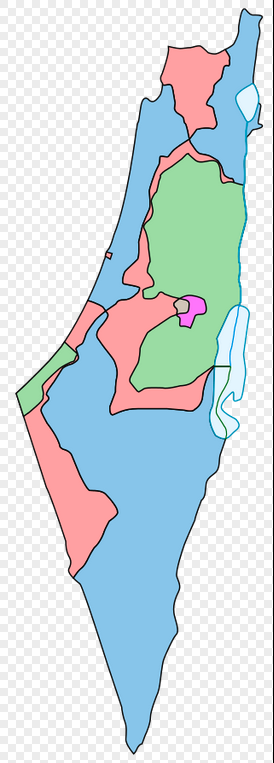
In November 1947 the U.N. adopted a Partition Plan that allocated 56% of Palestine’s land, including its most fertile agricultural areas, to a future Jewish State while the 67% of the people who were Arab would get their state on 43% of the land.
The Palestinian Arab leaders rejected the plan. The leaders of the well-armed Jewish settler movement accepted it and immediately made plans to seize not just the land the U.N. had granted them but as much of the rest of Palestine as possible. (See the map.)
During the U.N. vote on Partition, the British notably abstained. When Britain’s rule ended in May 1948, the Jewish settler leaders declared the independence of their state, Israel. The Palestinian Arab community was militarily much weaker, and the intervention of four (British-controlled) Arab armies failed to prevent either the Zionists’ seizure of more land than had been promised them, or their speedy, violent expulsion of hundreds of thousands of Arabs from they areas they controlled.
The trajectory of the State of Israel since 1948 has been in many ways a historical anomaly. During the latter half of the 20th century, billions of people throughout the Global South were shaking off the White colonial empires, gaining their independence, and building their countries to become robust players on the international scene. But in historic Palestine, the Indigenes never won their sovereignty. They remained uprooted, dispossessed, dispersed, without redress, and vulnerable to all the political winds that have scoured West Asia ever since.
Within ancestral Palestine, meanwhile, the European-origined colonists were able to build on the statehood they had achieved, and on the riches of the lands and resources they had plundered there. Adroitly exploiting international differences and generous Western aid, they created a high-income, high-tech economy and a fearsome military-industrial complex that included a non-trivial nuclear arsenal.
Back in 1776, the Anglo settler hardliners in North America were similarly able to shuck off the control of their metropole and create their own independent polity. Having done that, they proceeded on a truly vast scale to expand the lands and resources under their sway. They took advantage firstly of the industrial-scale violence they could (and did) deploy against the continent’s indigenous peoples, and then of the weakness of the rival French and Spanish colonial projects on the continent. By 1848 the Anglo settlers controlled the whole area of today’s mainland United States:
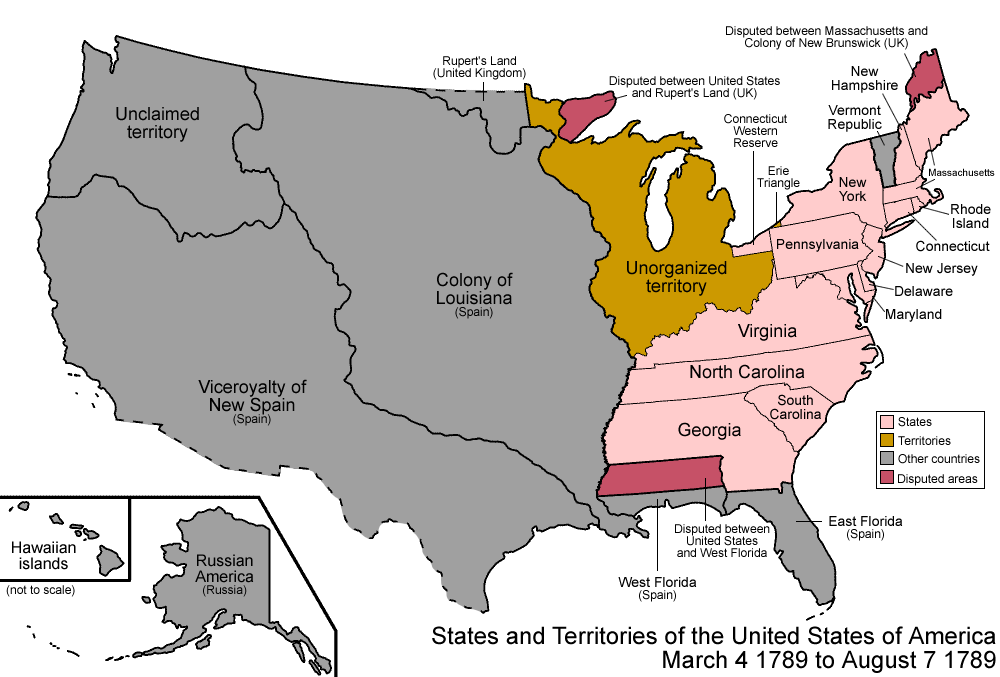
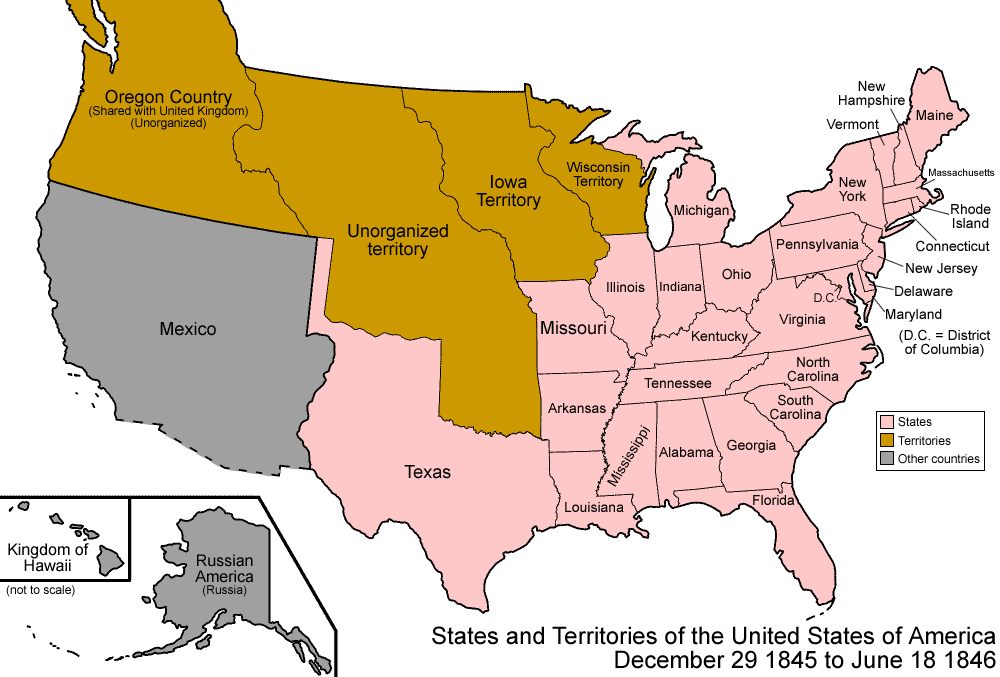
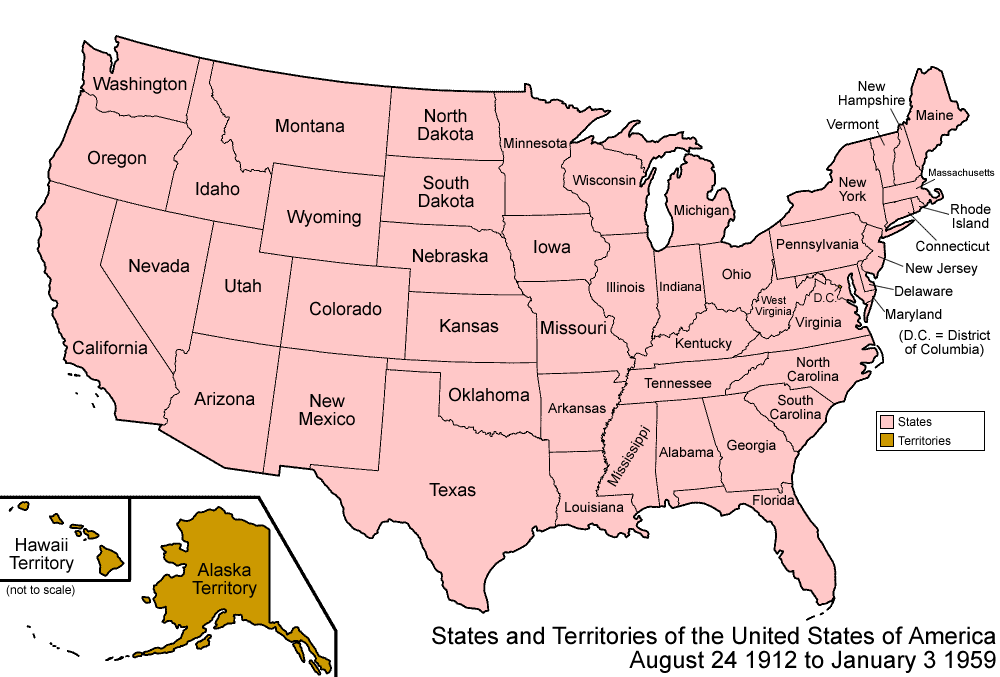
And they kept going! By 1900 they had added Alaska, Hawaii, Puerto Rico, Cuba, the Philippines, Guam, and other islands to their holdings.
In his book How to Hide an Empire, historian Daniel Immerwahr made the astute observation (p.80) that as these off-shore territories were acquired, the lawmakers in Washington faced,
a trilemma. Republicanism, white supremacy, and overseas expansion—the country could have at most two. In the past, republicanism and white supremacy had been jointly maintained by carefully shaping the country’s borders. But absorbing populous nonwhite colonies could wreck all that.
As he noted, Washington was happy (or eager!) to hand over the Philippines and Cuba to local governments over which they expected to exert continuing U.S. influence. Alaska and Hawaii were absorbed wholly into the federal system as constituent states in the Union—but only several decades later, after the White settlers in each area clearly outnumbered the Indigenes.
In Puerto Rico and Guam, that never happened. Thus, while the populations of those lands are U.S. citizens, for 120 years they have been kept in a limbo of second-class citizenry without full statehood and thus without voting representation in Congress.
The trilemma that Immerwahr described the United States as facing as it expanded is one that is deeply familiar to anyone who has studied Israel’s policies toward the Palestinian populations under its control. (Though in Israel’s case the supremacy to be safeguarded is not White as such, but Jewish.)
The record of the Zionist settler-colonial project in historic Palestine shows parallels with many other West European-origined colonial projects around the world, in addition to that of the United States.
Indeed, as we watch the brutal, expansionist actions of the Israeli government unfold before our eyes in real time, we can start to understand more deeply how it was that, between the 15th and 19th centuries CE, a small number of well-armed adventurers from five tiny polities on Europe’s Atlantic coast were able to build vast colonial empires that spanned all the world’s oceans and encircled the world… And how, by the end of the 19th century, those empires were able to control the destinies of a stunning 95% of humankind.
Most people of West-European heritage still, to this day, display little curiosity over how this state of affairs came about. In my case, growing up in England in the 1950s and 1960s, I took the status quo of the still-large role that my country played in world affairs largely as a given. (As many in my adopted home-country of the United States still do today.) I thought it was laudable and “modern” that peoples formerly ruled by the British Empire were now gaining (being given?) their independence; that it was “a good thing” that nearly all of those states remained part of the British “Commonwealth”; but also a good thing that over preceding centuries we had brought those peoples modernity and civilization in the form of enlightened governance, Christianity, the English language, and the abolition of slavery… That the United Nations was also a good thing—most especially since all of its top administrators were people of a trustworthy European heritage… That NATO and the “West” it defended were not only admirable but also essential… And so on, and so on.
When I was around 14, I read George Orwell’s Burmese Days. The starkness with which he described what he had done as a colonial administrator in Burma in the 1920s upended my view of the world. Over the decades since then, I have become ever more intrigued by the role that White settler colonialism played in forming the world and the worldview that I’d grown up in. But it’s taken a lot of work—research, thinking, discussing—to slowly start to figure it out…
Today, there is an easily accessible way for people of West-European heritage to understand the roots of our group’s continuing privilege at the global level. All we need to do is look at what the Israelis are doing in historic Palestine, before our very eyes.
Here’s what we see:
- The settler regime using its starkly greater command of the means of violence to seize ever more land and resources from the Indigenes.
- The settler regime working systematically to dispossess and disperse as many Indigenes as it can, while using ever more cunning (and always force-backed) methods to control the lives of those who remain under its control.
- The settler regime bringing in ever more settlers from around the world to populate the seized land and to participate as foot-soldiers in the continuing colonial project.
- Leaders of the settler-colonial project working hard to deploy a range of arguments to justify and motivate its continued pursuit—whether these arguments are theological, technocratic, or “civilizational”.
- The project’s ideologues simultaneously using a range of arguments to dehumanize the Indigenes, silence them, and delegitimize any arguments they might sometimes be able to make in the public square.
- The settler regime deploying the full range of tools of “divide and rule” to optimize its ability to control and counter the Indigenes.
If, then, we look “through Palestinian eyes” at the past 500 years-plus of the emergence and consolidation of Western control of the world system, what do we see? We see that, starting in the 15th century CE, a tiny group of polities from Europe’s Atlantic coast—Portugal, Spain, England, Netherlands, France—built robust globe-girdling empires using three main sets of tools: advanced shipbuilding and navigational skills; naval gunnery; and the new risk-sharing tools of a “modern”, profit-based financial system.
Portugal was the pioneer. The empire its always heavily armed naval adventurers started building in the 15th century initially focused on long-distance (and always very coercive) trading in high-value goods like spices and silks, primarily with the very wealthy ports that ringed the Indian Ocean. But then, the Portuguese saw the hyper-profits their neighbors in Spain made by sending their conquistadores to take over the richest land areas of Mexico, Peru, and the Caribbean and to extract the lands’ riches for themselves, using the labor of thousands upon thousands of enslaved Indigenes. So the Portuguese started doing the same in Brazil. Many of those Spanish and Poruguese extraction projects involved working the enslaved Indigenes to their deaths. It was then that Portugal, with its command of the African coast-line, launched the horrors of the trans-Atlantic slave trade.
Later, the Dutch and the English jumped into this brutal business of building extensive transoceanic empires, using their more highly developed financial systems to sustain their colonial/imperial projects even through hard times. And later yet, the French…
Nearly everywhere these European plunderers went, they started planting colonies of their own people, who could consolidate the empires’ extraction projects and extend them to ever greater chunks of land. Colonies of Anglos spread in North America, the Caribbean, Australasia, the Indian sub-continent, Malaysia, Africa… The French planted colonies in North America, Africa, the Indian Ocean, the South Pacific. The Dutch in Indonesia and South Africa. The Spanish in South America and the Philippines. The Portuguese in Africa and Timor.
As the 19th century proceeded, these West European maritime empires were also able to force humiliating “Concessions” upon the two great land-based empires that remained in Eurasia, that of the Ottomans at one end and of the Chinese at the other. On those empires’ coastlines, the West Europeans established little (always well-armed) colonies of their own people, well positioned to continue to stir up division deep within the surrounding region. One such colony, at the end of the 19th century, was the European-Jewish colony in Palestine. Others were in Lebanon and Syria… and much further east, in Hong Kong, Macau, and Shanghai.
And how did these all these far-flung colonies of European-origined people deal with the Indigenous peoples of the lands they colonized? See points 1-5 above.

In 2023, the global population is just over 8 billion people. Somewhere under 1.2 billion of these are citizens of countries in Europe (including Russia) or of European-origined countries like the United States, Canada, Australia, Israel, and New Zealand.
Hence, around 15% of humankind are citizens of “White” nations. But they (we) wield quite disproportionate power over the institutions of global governance—as I had detailed in my (now, slightly dated) 2008 book, Re-engage! America and the World After Bush.
Last November, the retired French diplomat Gérard Araud, who had been his country’s ambassador to the United Nations and then Washington, added an insider’s voice to this critique. He told a Quincy Institute webinar that,
When you look at the hierarchy of the United Nations, everybody there is “ours.” The Secretary General is Portuguese, he was South Korean. When you look at all the under-Secretaries General, all of them are either American, French, British, and so on. When you look at the World Bank, when you look at the IMF and so on. So that’s a first element: this order is our order.
Back when South Africa’s White population still clung to Apartheid, they constituted around 12% of the whole country’s population. Very few people elsewhere thought Apartheid was acceptable in South Africa. It is not acceptable in Israel today… And neither should we accept it, going forward, in matters of global governance.
But if we want to dismantle White privilege at the global level, we need to have a strong, historically based understanding of how this situation came about. (Hint: It was not an Act of God.) One way to do this is by studying the origins and history of the five big European empires of the past half-millennium—as I started to do in the “Project 500 Years” that I worked on back in 2021.
Another, probably faster way to understand the techniques of Western empire-building is to keep a careful eye on what Israel continues to do, on a daily basis, to the Palestinians and the other peoples of West Asia. The extremism of the present government there will doubtless give us many valuable lessons…

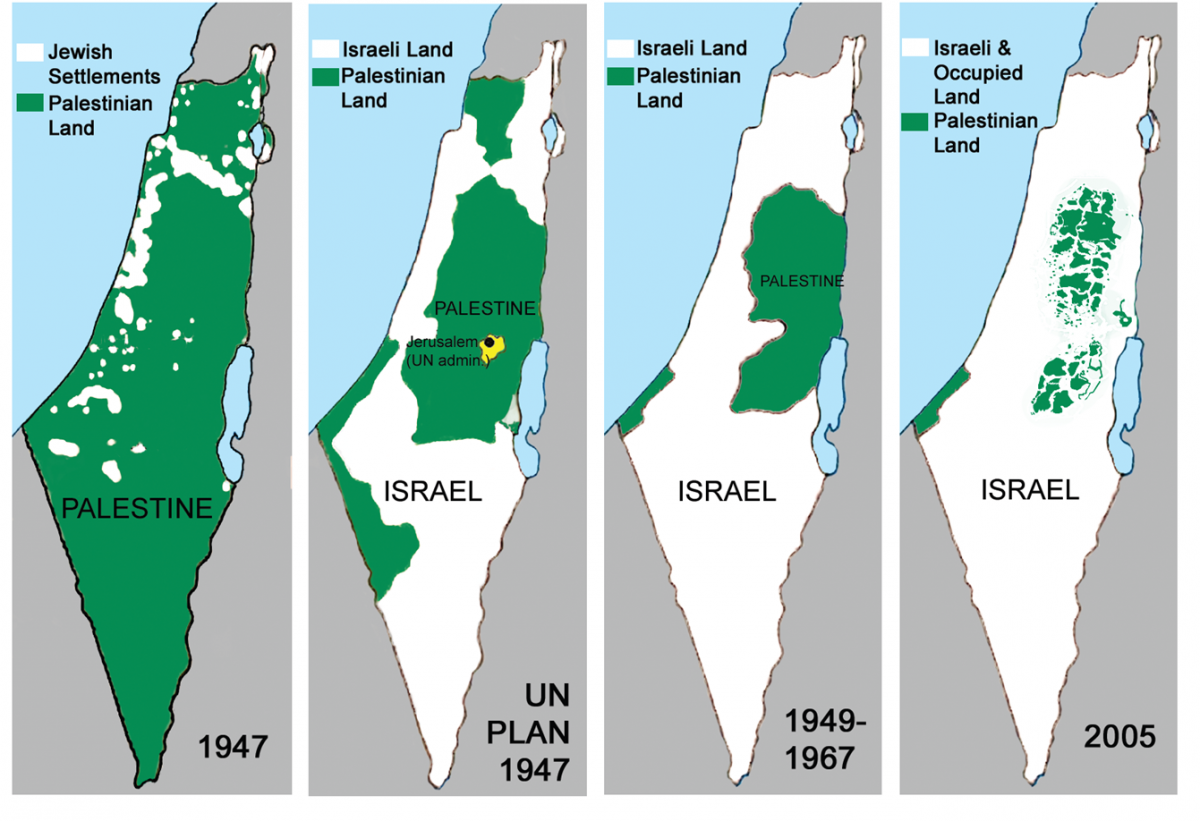

Excellent!
Many insights and historic facts concisely explained.
The graphics are especially clear and meaningful.
Congratulations!
Agreed!
MANY thanks, Helena. A terrific primer with much food for thought — and action. Ray
thank you, helena. a very thought provoking piece.
“Nearly everywhere these European plunderers went, they started planting colonies of their own people, who could consolidate the empires’ extraction projects and extend them to ever greater chunks of land.”
we have seen these anchor populations more recently too, in the 20th century, with ethnic Germans in the Sudetenland and ethnic Russians in the Baltic states, and other republics of the former USSR.
For a more complete review of how the British handed Palestine to the Zionists read Tom Suarez’ minutely documented Palestine Hijacked. And there you will find the origins and slogans of todays fascist Israeli government. Netanyahu, Smotrich and Ben Gvir are simply parroting the language and programs of the 1930s Zionists in Palestine.